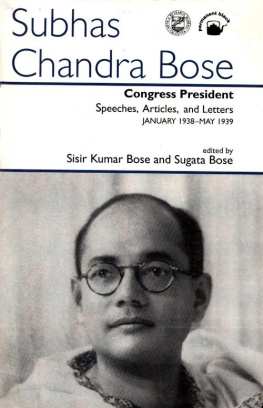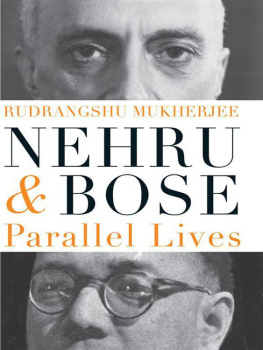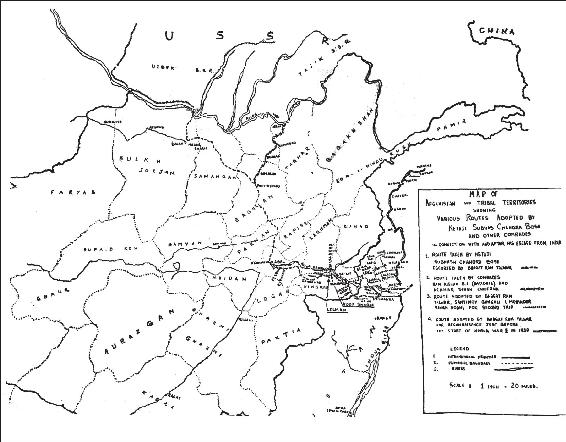THE
INDIAN
SPY
Also by Mihir Bose
History and Biography
The Lost Hero: A Biography of Subhas Bose
The Aga Khans
BollywoodA History
The Memons
False Messiah: The Life and Times of Terry Venables
Michael Grade: Screening the Image
From Midnight to Glorious Morning?
Business
How to Invest in a Bear Market
Fraudthe Growth Industry of the 1980s (co-author)
The Crash: the 198788 World Market Slump
Crash! A New Money Crisis: a Childrens Guide to Money
Insurance: Are You Covered?
William Hill: The Man and The Business (co-author)
General Sports
The Spirit of the Game
Sports Babylon
Sporting Colours: Sport and Politics in South Africa
The Sporting Alien
Cricket
A History of Indian Cricket (Winner of the 1990 Cricket Society Literary Award)
A Maidan ViewThe Magic of Indian Cricket
Cricket Voices
All in a Day: Great Moments in Cup Cricket
Keith Miller: A Cricketing Biography
Football
Manchester Unlimited: The Rise and Rise of the Worlds Premier Football Club
Manchester DisUnited: Trouble and Takeover at the Worlds Richest Football Club
The World Cup: All You Need to Know
Behind Closed Doors: Dreams and Nightmares at Spurs
The Game Changer
THE
INDIAN
SPY
The True Story of the Most Remarkable
Secret Agent of World War II
MIHIR BOSE
ALEPH BOOK COMPANY
An independent publishing firm
promoted by Rupa Publications India
First published in 2016 in the UK as Silver: The Spy
Who Fooled the Nazis by Fonthill.
Published in India in 2017
by Aleph Book Company
7/16 Ansari Road, Daryaganj
New Delhi 110 002
Copyright Mihir Bose 2016, 2017
All rights reserved.
The author has asserted his moral rights.
The views and opinions expressed in this book are the authors own and the facts are as reported by him, which have been verified to the extent possible, and the publishers are not in any way liable for the same.
No part of this publication may be reproduced, transmitted, or stored in a retrieval system, in any form or by any means, without permission in writing from Aleph Book Company.
ISBN: 978-93-86021-58-8
1 3 5 7 9 10 8 6 4 2
For sale in the Indian subcontinent only
This book is sold subject to the condition that it shall not, by way of trade or otherwise, be lent, resold, hired out, or otherwise circulated without the publishers prior consent in any form of binding or cover other than that in which it is published.
To Caroline and Indira, for everything.
The various routes through hostile tribal areas Silver, and some of his colleagues, took during the war when they journeyed between India and Kabul. This rough map with very poor legibility is taken from Silvers (Bhagat Ram Talwars) own book from 1976, The Talwars of Pathan Land and Subhas Chandras Great Escape .
Preface
I first became aware of Silver back in the mid-1970s when I was researching The Lost Hero , my biography of Subhas Bose, the Indian revolutionary. We share the same surname but are not related. At that stage a comprehensive full length biography of Bose had not been written, my book was the first using recently released British and Indian documents. The material available included the story of how Silver had helped Bose escape India during the war to secure foreign help to free India. I corresponded with him but the way he told his story made me wonder if it was quite the whole truth. Was he only a spy for the Axis powers? Or had he spied for the British and the Russians as well? Indeed had the British and the Russians collaborated in running his spy operation? My questioning of senior Indian communist party officials, who had advised Silver, increased my doubts and I raised some of them in the first edition of The Lost Hero .
How, I wondered, was it possible that by 1942 all Silvers associates had been arrested by the British but he was free to carry on with his spying. I concluded that, even when we have allowed for [his] extraordinary brilliance at deception we are left with some doubts The record is so murky that a clear answer is impossible.
It was while my book was with the printers that the truth began to emerge through Milan Hauner. For my book I had read Milans Cambridge thesis on India in Axis strategy during the war. This was largely based on German sources covering the years 19391942 and was the first truly historical look at this fascinating and little known story of the war. As I finished my book Milan decided to convert his thesis into a book taking it up to 1945 but had to cope with the fact that under the thirty year rule it was difficult to get access to British records. Then one day, while working in the old British Public Records Office in Chancery Lane, and looking at files relating to the tribal areas on the North-West frontier of what was British India he stumbled across a carbon copy of Silvers confession to the Lahore police in November 1942. A document concerning the Punjab police should not have been in that file. It might have got there by mistake, or maybe, because the events concerned the tribal areas. It was an amazing discovery revealing all his secrets which until then Silver had so successfully concealed. However, when Milan mentioned the find to his friend Hugh Toye, a wartime British intelligence officer who had interrogated those who fought in the army Subhas Bose organised to fight the British during the war, and written an excellent book on Bose, Toyes reaction surprised Hauner. Hugh got very nervous. He put gentle pressure on me not to write about it. He felt Silver had made a deal with the British about his spying and it would be wrong to breach that. Indeed he contacted the PRO and tried to close the file. I, as an independent historian, could not accept that, but I decided I would not sensationalise the story. Hauner combined his fresh discovery with the German material he had and other material treating the subject of Silvers war-time activities with due care. When he came to write his book the Silver story formed one, fairly small, part of his 750 page book, India in Axis Strategy . The book has many strands and remains the most authoritative study on Indias relationship with the Axis powers during the war.
I cannot thank Milan enough for his pioneering work and the help and encouragement he has continued to give me. This has included supplying me with research by the Russian historian Yurii Tikhonov on Silver, in particular, a fascinating document that Kim Philby sent to his Moscow controllers and also other significant discoveries in British archives by Eunan OHalpin.
Many years after Hauners find the historian Patrick French succeeded in getting the Indian Political Intelligence files open to the public. Patrick kindly directed me to the IPI files called The Bose Conspiracy which had further fascinating material on Silver and his associates; so my thanks to him.
In my revised edition of The Lost Hero published in 2004 I did use some of this material with a chapter devoted to The Man called Silver, using the code name the British had given him. But the idea of writing a full length biography of Silver came from Professor Tapan Raychaudhuri. In his foreword to my revised edition he wrote, This prince among spies surely deserves a biography in his own right and perhaps even a film. Hats off to a man who deceived everybody and survived the War without being hanged. The idea this sparked led to an initial standalone article on Silver, Everyones Man in Kabul, in History Today in 2009 and I am indebted to the encouragement that Paul Lay, the editor, gave me when I suggested it to him.
















